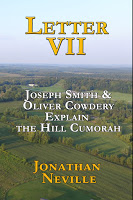So many people have asked for a way to explain Letter VII to their friends that I’m posting this summary which you can print out and share with your friends and family.
Here is the link:
https://drive.google.com/file/d/1mDizAWGkFDBR26gc9FsWGNPdhmTub3sc/view?usp=sharing
You can also print it and put it inside your copy of my Letter VII book when you share it.
There are a lot of details beyond this brief summary, of course. That’s why I wrote the book about it. I also have a lot of information on the Letter VII blog, which is here:
http://www.lettervii.com/
Thanks to the efforts of certain intellectuals, most people have never heard of Letter VII. At first, they may be skeptical that one letter can make a difference. But when you learn about it, you discover this was much more than just “a letter.” This was a formal declaration of a series of facts, written by a member of the First Presidency (President Cowdery) and endorsed by the entire First Presidency and Quorum of the Twelve at the time. In the ensuing 150 years, every member of those quorums who has addressed the issue has affirmed Letter VII; no member of those quorums has ever contradicted Letter VII.
This is the text of the file you can print from the above link:
In response, the intellectuals are teaching their students that the prophets and apostles are wrong.
This summary of Church history will help members understand the issue so they can support the Brethren when confronted with arguments against the New York Cumorah.
Source: Book of Mormon Concensus

